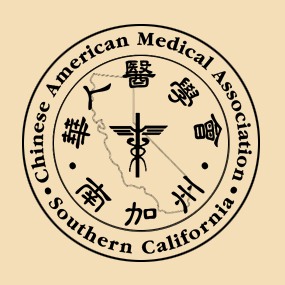|
10:00 AM
10:00 AM
|
Registration
Brunch Buffet Session (Food service will be closed at 11:30 AM)
|
|
11:30 AM
|
Welcome and Introduction
|
|
12:00 PM
|
Presentation Title:
"Stigma: A Major Barrier to Health Care"
Faculty:
Anna Xiao, MD
Purpose:
Stigma represents a major barrier to health care for Chinese Americans,
in particular health seeking behaviors for depression, dementia,
obesity, HIV, cancer, rash, opioid use, and hepatitis B.
A lecture is needed for physicians to better understand how stigma affects
diagnosis and management of illness and of ways to counteract stigma.
Objectives:
- Describe interventions to decrease stigma of various illnesses
- Relevance of culturally appropriate models of treatment to reduce stigm
- Employ appropriate skills in discussion of stigmatizing illnesses with patients and their families
- Implement ways to decrease the stigma of the diagnosis of mental illness
- Implement ways to decrease the stigma of hepatitis B
- Implement ways to decrease the stigma of HIV
|
|
1:00 PM
|
Presentation Title:
"Mental Health, Substance Use and Drug Addiction"
Faculty:
John Tsuang, MD
Purpose:
Many may not realize that alcohol use and tobacco use represent a form
of substance use and drug addiction. The purpose of this lecture is for the
audience to realize there is a biological reason for certain combinations of
problems in patients, where mental health problems underlie substance use.
This lecture will examine the connection between substance abuse and
mental illness and its prevention of substance misuse.
Objectives:
- Describe how anxiety, depression, and antisocial behavior can
contribute to substance use problems
- Describe the interaction of mental health and pain disorders
- Summarize data on depression and alcohol use
- Recognize patients where mental health problems interact with
illnesses and substance use
- Incorporate screening for depression and anxiety
- Obtain detail history for substance use and drug addiction
|
|
2:00 PM
|
Presentation Title:
"The Epidemic of Opiates Use and Misuse"
Faculty:
Weiguo Zhu, MD
Purpose:
In 2017, more than 47,000 Americans died as a result of an opioid overdose,
including prescription opioids, heroin, and illicitly manufactured fentanyl,
a powerful synthetic opioid. This issue has become a public health crisis with
devastating consequences including increases in opioid misuse and related overdoses.
Adults living with depression, anxiety and mood disorders receive 51 percent
of all opioid prescriptions, despite representing only 16 percent of the nation’s
overall population. To combat the growing national opioid epidemic, it is critical
that we begin to rethink pain management among this group. In response to the
opioid crisis, this lecture will be discovering new and better ways to prevent opioid
misuse, treat opioid use disorders, and manage pain.
Objectives:
- Summarize tools available for screening patients
- Describe the opioid safety initiative and website
- Describe prescription practices for opioids
- Describe non-opioid approaches to pain management
- Summarize the relationship between pain and suicide
- Prescribe naloxone for patients on chronic opioids
- Perform trials of tapering opioids when clinically indicated
- Implement CDC guidelines with attention to areas of difficulty
|
3:00 PM
|
Break
|
|
3:15 PM
|
Presentation Title:
"Mental Health Care For College Students"
Faculty:
Huzaifa Ashraf, MD
Purpose:
There are approximately 20 million students in U.S. colleges and universities.
According to the latest Association for University and College Counseling Center
Directors survey, 70% of directors believe that the number of students with severe
psychological problems on their campus has increased in the past year.
However, 19 % of directors report the availability of psychiatric services on their
campus is inadequate. This is a time when knowledge about the mental health needs
of college students, the effect of mental health on academic performance,
risk factors for depression and suicide and about interventions to improve
mental health among college students.These developments have led to a
knowledge, competency and practice gap for health professionals who see
college students. The purpose of this lecture is to narrow these gaps.
Objectives:
- Summarize types of mental health problems commonly encountered by college students
- Summarize current knowledge about sleep and depression describe the Collaborative
model
- List risk factors for suicide
- Screen for and diagnose mental health disorders
- Screen for risk factors for depression and suicide
- Determine intervention and make referral for specific diagnoses
- Perform counselling on stress reduction/mindfulness/sleep
|
|
4:15 PM
|
Presentation Title:
"Prevention and Management of Physician Burnout"
Faculty:
Edmond H. Pi, MD
Purpose:
Nearly 44% of U.S. physicians reported feeling burned out, with female
physicians 28% more likely to experience burnout than male physicians,
according to the results of the 2019 Medscape National Physician Burnout,
Depression & Suicide Report. The report found a correlation between the
number of hours worked per week and the percentage of physicians
experiencing burnout: From 48% to 57% working more than 50 hours per
week reported burnout, versus about one-third of those working between
31 and 40 hours. More than 15,000 physicians across 29 specialties responded
to the survey. About half of physicians said their problems with burnout or
depression have not become bad enough to seek help, while others cited potential
career-damaging stigma should they seek mental health care, or a belief that the
problem lies with the medical system, not them. Reports of physician burnout and suicide show important gaps in physician knowledge, competence andpractice in
managing challenges of modern practice. Understanding these
principles will also help with educating patients and caregivers.
Objectives:
- Describe sources of work-related stress
- Identify risk factors and warning signs for suicide
- Describe steps to implement standardized processes for physicians seeking care
in your practice
- List ways to create an environment of support and physician wellness in your organization
- Find meaning in work
- Develop and strengthen supportive relationships
|
| 5:15 PM |
Adjournment
|


